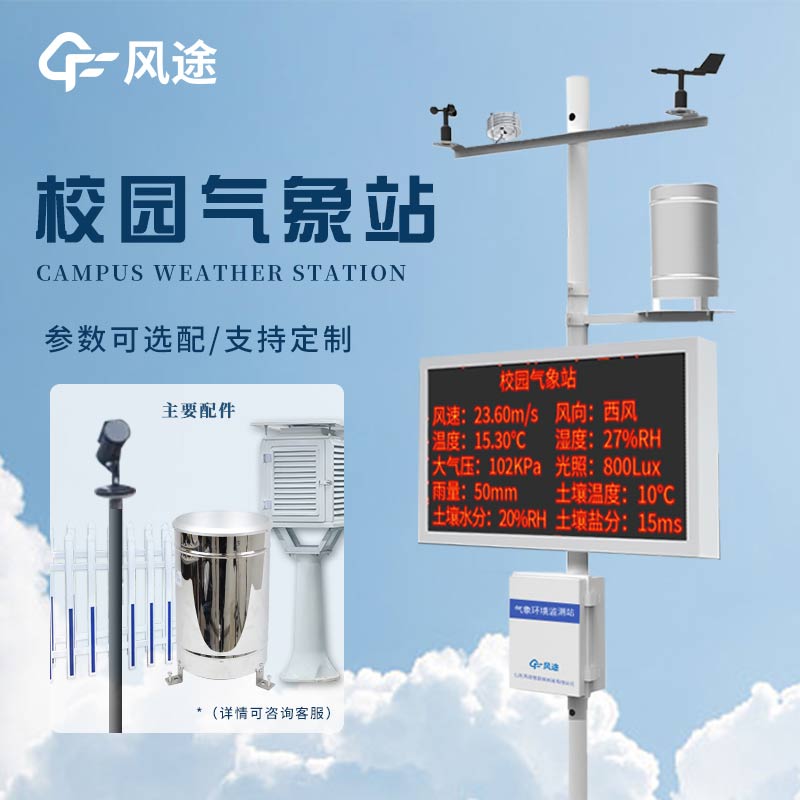Meteorological environment monitoring equipment supplier
Insist on doing high-precision customer favorite technology products
In China, the Campus Weather Station has a profound historical background and important practical significance. Since some primary schools in Qingdao initiated meteorological observations in 1924, its development has never ceased and has now become prevalent in primary and secondary school campuses across the country.
Campus Weather Stations are rich and diverse in types. Whether they are the delicate weather stations in urban campuses or the simple observation points in rural campuses, they have all become windows for students to explore the mysteries of meteorology. These weather stations are equipped with professional instruments such as wind vanes, thermometers, and rain gauges, accurately recording the slightest changes in the weather.
The weather station presents complex meteorological knowledge in an intuitive manner. By observing changes in wind direction, wind speed, air temperature, and humidity, students gain a deeper understanding of knowledge in subjects such as physics and geography, broaden their scientific horizons, and stimulate their interest in exploring natural laws. Long-term observation practices cultivate their rigorous, meticulous, and seek truth from facts scientific attitudes and exercise their abilities in data recording and analysis, laying a solid foundation for future learning.
Through meteorological science popularization education, students learn how to protect themselves during severe weather such as rainstorms, strong winds, and thunderstorms, enhancing their awareness of disaster prevention and mitigation. They also pass this knowledge on to their families and friends, expanding the coverage of meteorological safety knowledge.
However, the further development of the Campus Weather Station still requires efforts from multiple parties. Clear construction standards should be formulated to ensure the standardization and perfection of facilities; professional and practical textbooks should be compiled to provide students with systematic knowledge; a high-quality team of instructors should be cultivated to ensure the effective implementation of activities; an exchange platform should be established to promote the sharing of inter-school experiences; and network resources should be optimized to facilitate the dissemination of meteorological knowledge.
